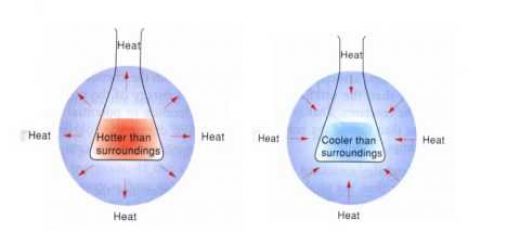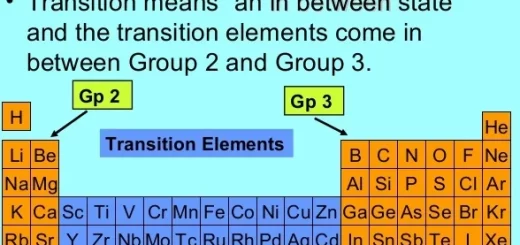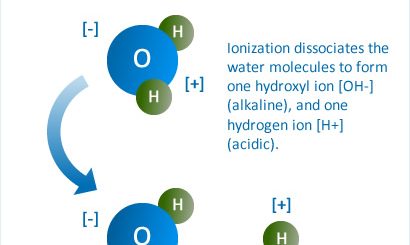Alkali metals compounds properties and uses (Sodium hydroxide and Sodium carbonate)
Alkali metals are elements that are not found in nature in a free state, but rather in the form of ionic compounds because these metals easily lose their valence electron and they are the most powerful reducing agents, Preparing of these metals involves the electrolysis of their molten (fused) halides.
Extraction of sodium metal from its ores
By the electrolysis of molten sodium chloride in the presence of a flux substance to decrease the melting point of the halide, Oxidation and reduction reactions occur at the anode and cathode, such as the following:
2Cl − → Cl2 + 2e− (Oxidation at anode)
2Na + + 2 e−→ 2Na (Reduction at cathode)
Alkali metals compounds
From the commonly known sodium compounds: Sodium hydroxide NaOH and Sodium carbonate Na2CO3.
Sodium hydroxide NaOH
The most important properties of sodium hydroxide
- It is a white hygroscopic solid compound, Hygroscopic substance is a substance which absorbs the water vapour from the atmospheric air.
- It has a soapy feel and corrosive effect on the skin.
- It dissolves easily in water forming an alkaline solution and the reaction is accompanied by the liberation of heat energy as it is an exothermic dissolution.
- It reacts with acids forming sodium salt of the acid and water (Neutralization reaction).
HCl (aq) + NaOH (aq) → H2O (l) + NaCl (aq) sodium chloride
H2SO4 (aq) + 2NaOH (aq) → 2 H2O (l) + Na2SO4 (aq)
The most important uses of sodium hydroxide
- It is used in many important industries, such as soap, synthetic silk & paper.
- It is used to purify petroleum from the acidic impurities.
- It is used in the detection of basic radicals (cations), such as Cu2+ and Al3+.
Detection of Cu2+ and Al3+ cations by using sodium hydroxide solutions
Copper (II) cation Cu2+: Detection by adding sodium hydroxide solution to the cation solution such as copper II sulphate.
Observation: A blue precipitate of copper II hydroxide is formed which turns black on heating, due to forming of copper II oxide.
CuSO4 (aq) + 2NaOH (aq) → Na2SO4 (aq) + Cu (OH)2 (s) ↓ blue ppt.
Cu(OH)2 (s) → H2O (l) + CuO ( s ) ↓ black ppt.
Aluminum cation Al3+: Detection by adding sodium hydroxide solution to the cation solution such as aluminum III chloride.
Observation: A white gelatinous precipitate of aluminum hydroxide is found which dissolves in excess reagent (NaOH), To form sodium meta aluminate (NaAlO2), which is soluble in water.
AlCl3 (aq) + 3NaOH (aq) → 3NaCl (aq) + Al (OH)3 (s) ↓ white ppt.
Al(OH)3 (s) + NaOH (aq) → 2 H2O (l) + NaAlO2 (aq) ↓ sodium meta aluminate
Sodium carbonate Na2CO3
The most important properties of sodium carbonate
- White powder easily dissolves in water and its solution has an alkaline effect.
- It is a thermal stable compound, it melts by heat without decomposition.
- It reacts with acids forming sodium salt of acid and carbon dioxide gas evolves.
2HCl (aq) + Na2CO3 (s) → 2NaCl (aq) + H2O (l) + CO2 (g)
The most important uses of sodium carbonate
- It is used in many important industries, such as the manufacture of glass, paper industry & textile industry.
- It is used to remove water hardness (water softening).
Preparation of sodium carbonate in laboratory
By passing carbon dioxide gas through a hot solution of sodium hydroxide, then the solution is left to cool, white crystals of hydrated sodium carbonate are separated gradually.
CO2 (g) + 2NaOH (aq) → H2O (l) + Na2CO3 (aq)
2NaOH (aq) + CO2 (g) → Na2CO3.10 H2O (s) → Na2CO3 (s) + 10 H2O (v)
The hydrated sodium carbonate Na2CO3.10 H2O is known as washing soda because it is used to remove the water hardness which is arisen from the presence of soluble Ca2+ and Mg2+ salts in water, where washing soda reacts with these salts forming calcium carbonate and magnesium carbonate which are insoluble in water, so, the water hardness is removed as shown in the following equations:
Na2CO3 (aq) + CaCl2 (g) → CaCO3 (s) ↓+ 2NaCl (aq)
Na2CO3 (aq) + MgSO4 (aq) → Na2SO4 (aq) + MgCO3 (s) ↓
Preparation of sodium carbonate in the industry (Solvay process)
The scientist Solvay had reached a method to prepare sodium carbonate from table salt, by passing ammonia and carbon dioxide gases in a saturated aqueous solution of sodium chloride to produce sodium bicarbonate.
NH3 (g) + CO2 (g) + NaCl (aq) + H2O (l) → NaHCO3 (aq) + NH4Cl (aq)
Then heating sodium bicarbonate, it will decompose to sodium carbonate, water & carbon dioxide.
2NaHCO3 (aq) → Na2CO3 (aq) + H2O (v) + CO2 (g)
Biochemical role of sodium & potassium ions
Sodium ions
They are considered from the common ions present in the blood plasma & in the intercellular fluids in the body, They are found in many natural sources such as vegetables (especially celery), milk & its products, They have an important role in the vital processes, Because they represent the required medium to transfer the nutrients, such as glucose and amino acids.
Potassium ions
They are considered from the common ions present in the living cell, They play an important role in the oxidation of glucose in the living cell, to produce the required energy for its activity, They are found in many natural sources such as meats, milk, eggs, vegetables & cereals.
Elements of p-block, General properties of group 5A elements (group 15)




The note on this material is very interestong and I like it verymuch.
Thank you very much for your comment